Recency bias, or the tendency to give disproportionate weight to something that just happened, seems to hit baseball fans and analysts especially hard. People who follow baseball (despite everything we know about sample sizes) unfortunately still fall all too often into the “what have you done for me lately” trap instead of accounting for a player’s or team’s performance in the hundreds of games beforehand. But when recency bias collides with a player’s historical negative trends, it unfortunately has to be taken as more than just another hot take and should be investigated further. After witnessing Jason Hammel’s disastrous performance last Tuesday against the Brewers (5 2/3 innings pitched, 9 runs, 8 earned runs), to go along with recent subpar starts against the Rockies and Dodgers, it’s safe to wonder: Has second half Hammel finally arrived in 2016? And if that’s the case, can Hammel make the necessary adjustments to ensure that he can provide postseason value if called upon?
Many of you are probably aware of Hammel’s tendency to struggle during second halves, but just as refresher I’ve compiled a summary of his first half vs. second half performance during the last three seasons in the table below.
| Season | IP | ERA | FIP | K% | BB% | OPS | BABIP |
| 2014-1st Half | 113.2 | 3.01 | 3.33 | 23.60% | 5.70% | 0.637 | 0.273 |
| 2014-2nd Half | 62.2 | 4.31 | 5.00 | 19.50% | 6.90% | 0.754 | 0.270 |
| 2015-1st Half | 103.2 | 2.86 | 3.12 | 25.60% | 4.40% | 0.612 | 0.254 |
| 2015-2nd Half | 67.0 | 5.10 | 4.54 | 22.30% | 7.30% | 0.856 | 0.335 |
| 2016-1st Half | 96.1 | 3.46 | 4.52 | 20.10% | 7.60% | 0.699 | 0.245 |
| 2016-2nd Half | 55.1 | 3.58 | 4.15 | 20.80% | 8.20% | 0.743 | 0.295 |
Yikes. In 2014 and 2015 the second half declines seem pretty simple on the surface; strikeout rate went down and walk rate went up, as Hammel simply doesn’t have the stuff to consistently work out of jams if you take away some of his swing and miss ability. Mike Banghart dug a little deeper into Hammel’s 2014 and 2015 second half struggles at BP Wrigleyville earlier this year and made some interesting observations regarding Hammel’s pitch velocity and vertical movement:
“There are two discernible trends in the velocity charts from 2014-2016. Hammel struggled in the middle part of 2014 and recovered towards the end of the season. As the chart illustrates, the velocity on Hammel’s fastball and slider both dipped in the middle of the season and both climbed to season-high levels as he regained effectiveness at the end of the season. 2015 saw Hammel’s performance decline throughout the season, and what we see is convergence of fastball and slider velocity further along in the season.
” 2014 was the slider’s drop in vertical movement only increases as the general trend. In 2015 we saw convergence as the fastball and slider moved together in the amount of vertical movement each pitch generated. The patterns indicated here point to slightly different causes of these second-half flops for Hammel. 2014 appears to be a period of dead-arm-like fatigue. Command left Hammel as his stuff was just not as effective. His BABIP spiked in July while he was also walking more batters than any point in the season. In 2015 we just see continual decline. This would fit the pattern of a nagging injury hampering his performance as his two main offerings became more and more similar in velocity and vertical drop.”
Mike commented in his analysis that just like in 2015, as of July 2016 we were again starting to see a convergence of velocity and vertical movement of Hammel’s three primary pitches: his four seam fastball, his sinker (two seam fastball), and his slider. I took a look at updated Brooks data for velocity and vertical movement to see if this trend had continued.
To Hammel’s credit, it seems that the slider and fastball(s) convergence issues that plagued him in 2015 have not continued into 2016. Unfortunately the same dismal results that occurred in Hammel’s 2015 second half seem to be recurring. Below I’ve included tables that compare Hammel’s pitch results from the beginning of the season to August 20th, and then from August 21st onward.
Again to his credit Hammel copped to his struggles, even admitting after his Brewers start that he is searching for his slider. Looking at this from the Statcast perspective I’ve isolated all balls in play given up by Hammel since his 8/21 start against the Rockies with exit velocities greater than ninety five mph and launch angles greater than ten degrees. There were twenty balls tracked by Statcast during this time period that fit the below description: five doubles, four flyouts, five home runs, one lineout, one sacrifice fly, three singles, and one triple. I’ve plotted the location of each below.
Whether Hammel’s trying to blow his fourseamer past a hitter up in the zone, or induce a grounder by pounding the bottom of the strike zone with his sinker, or trying to induce a swing and miss on his slider (down and away for right handed hitters, down and in for left handed hitters) it doesn’t seem to matter. Since that 8/21 start against the Rockies each of Hammel’s primary pitches have lived over the heart of the plate and as a result Hammel’s stat lines have suffered.
There’s a school of thought that none of Hammel’s current struggles should concern the Cubs, after all they’re virtually assured of clinching NL home field and already have four competent starters and multiple long men (i.e Cahill, Montgomery) who are capable in the bullpen. But if there’s two constants in baseball they’re these: 1.) you can never have enough pitching because, 2.) pitchers always get injured, often at the most inopportune times. Last year’s Cardinals team is a great example of this. You could argue that the Carlos Martinez injury (who would have started a playoff game) in September 2015 allowed the Cubs the deciding advantage in NLDS, as St. Louis was forced to start John Lackey on three days rest in Game Four. We know how that turned out. I’m not saying I want Hammel to start or to pitch at all in the postseason. That being said, the major league postseason has a long and storied history of having unexpected players playing substantial roles. With that in mind, we should all be rooting for Jason Hammel (who has pitched the least amount of innings among Cubs starters), Chris Bosio, and Co. to short out Hammel’s most recent struggles, even if 90’s alt rock isn’t your thing.
Lead photo courtesy Benny Sieu—USA Today Sports.
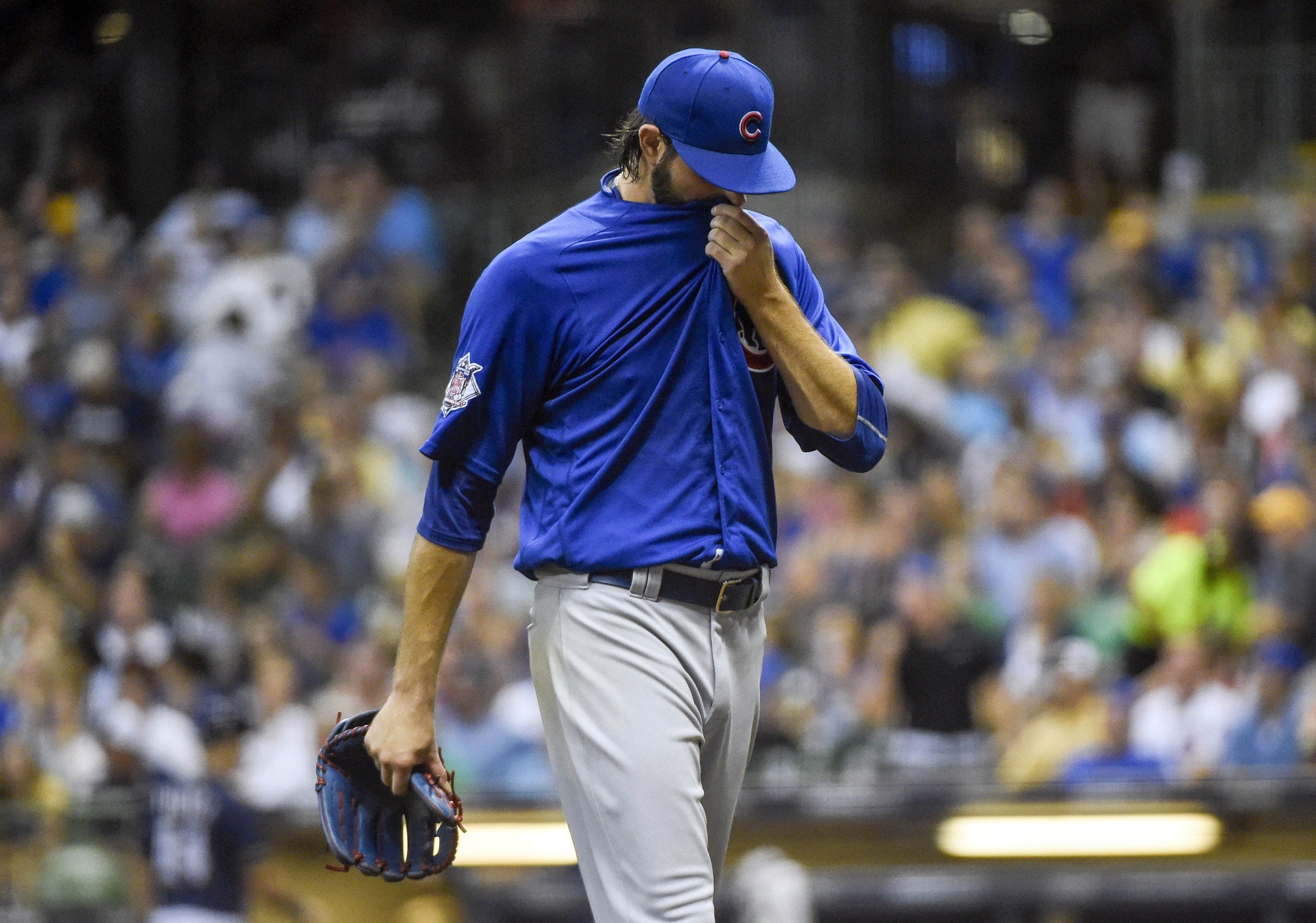
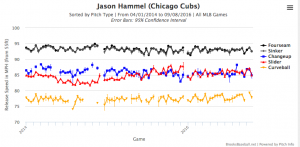
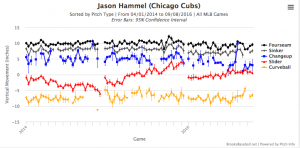
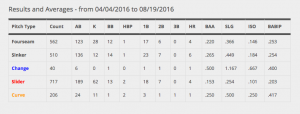
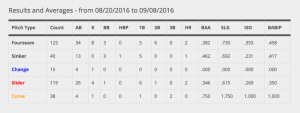
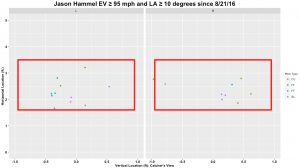
Great article. thank you.
Appreciate the kind words, thanks for reading!